A thirty-ton tank is in its element on solid ground, but was not designed to float, let alone swim in large bodies of open water. The DD tank was a method of seemingly breaking physics to make this a reality.
A heavily armored warship can easily perform this trick, but can only do so because of its large internal volume, which allows it to displace enough water to float. So, for a relatively small but very heavy vehicle like a tank, a way must be found to offset its lack of buoyancy, and this can be done by erecting a water-tight flotation structure around the vehicle.
Several nations experimented with amphibious tanks in the lead up to the Second World War, with practical tests recording a lot of failures, but the Japanese successfully employed a light amphibious tank during the invasion of Malaya in 1941-2. The most successful employment of amphibious tanks during the conflict was by the Allied powers during the invasion of Europe in June 1944.
Here, an ingenious adaptation of the Sherman medium tank gave rise to the Duplex-Drive (DD) tank, which is credited with helping the Allies secure the invasion beaches on D-Day, and saving many lives in the process.
Contents
Background and Development
Experimentation with amphibious tanks had taken place since the First World War. The value of a tank capable of crossing water was well understood, but the results were generally unsatisfactory – with the exception of Japanese designs using light tanks.
When the US entered the war in 1941, long-term Allied planning began focusing on the goal of invading occupied France, and on solving the practicalities of forcing an entry onto a heavily-defended stretch of coastline. The testing of Allied amphibious assault techniques during the Dieppe Raid of August 1942 was mostly unsuccessful with very heavy Canadian casualties, but some vital lessons were learned.
Read More The M4A2 Sherman Rusting Away on Utah Beach
One major point agreed on was specialised armored vehicles were vital to support any invasion force, as the Churchill tanks used at Dieppe either threw their tracks in the treacherous shingle beaches, or were halted by obstacles.
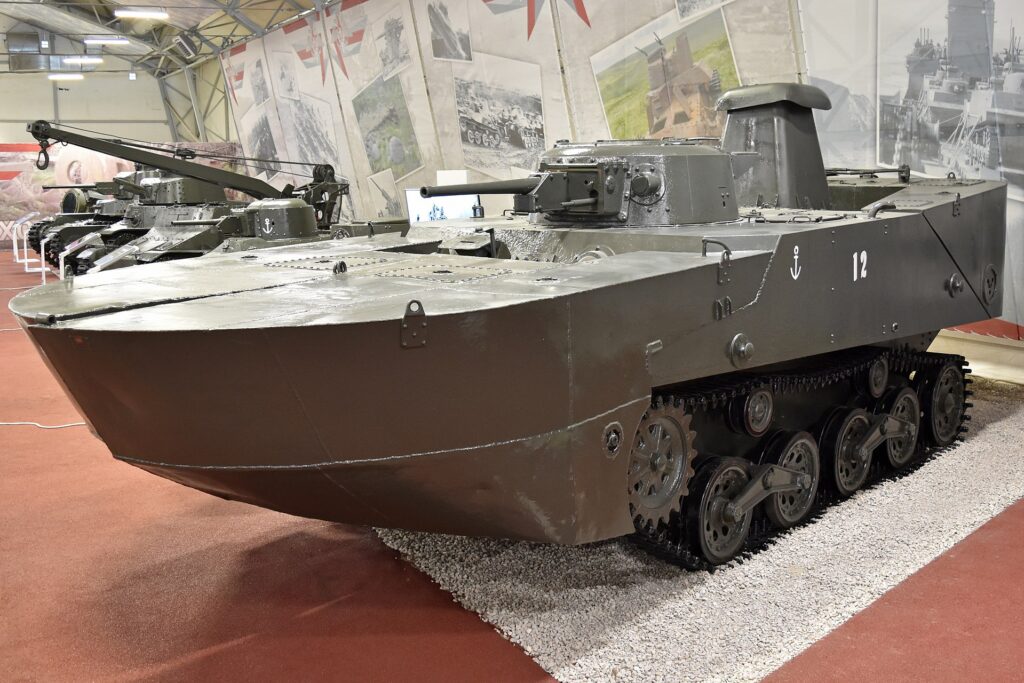
The job of designing and procuring specialised amphibious armorred systems was handed to Major-General Sir Percy ‘Hobo’ Hobart, an innovative and resourceful Royal Engineer. Hobart had upset the peace-time army with his ‘unconventional’ ideas about tank warfare, but had trained two armored divisions (7th and 11th) that performed well during the conflict.
Being assigned to train up a new 79th Armoured Division, Hobart was abruptly ordered in 1943 to convert his new command into a test unit for the development and employment of armored vehicles for the planned invasion of the continent.
Hobart and his team analysed the results of the Dieppe Raid, and a series of specialised vehicles were designed, each intended to counter a specific tactical challenge encountered when conducting an assault onto a heavily fortified and defended coast. Initial tests were conducted with a variety of armored vehicles, and some specialised vehicles were based on the British Churchill tank,. But it was the American M4 Sherman that was chosen as the template for many of what became known as ‘Hobart’s Funnies’.
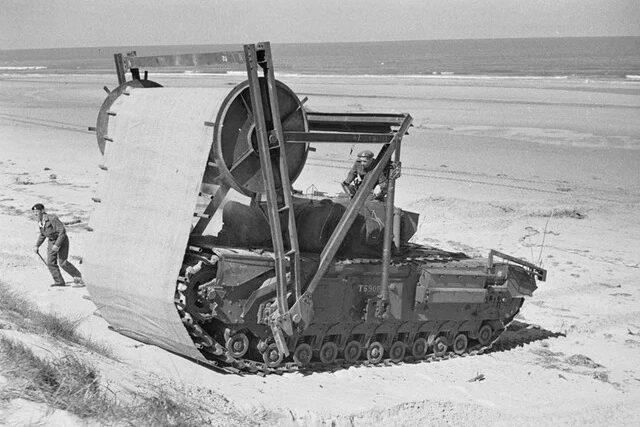
Most of these innovative designs were configured to enable ground forces to deal with crumbling and boggy beaches, force a safe way through coastal minefields and demolish natural and man-made obstacles encountered in the littoral area. Accordingly, Sherman and Churchill tanks were equipped with systems for deploying beach matting, rotating flails to detonate mines, and huge mortars to destroy pillboxes and other fortifications.
Besides these extremely important combat support vehicles, a design for an amphibious tank commenced, as it was theorised that tanks landing with the first infantry wave of an invasion would provide much-needed firepower on the beach. They also could be utilised for temporary cover by infantry from enemy fire during the initial stages of the landing.
Earlier flotation techniques included adding large floats around the tank, which did indeed stop them from sinking. However, they couldn’t be launched from assault transports due to the huge dimensions of the bulky floats employed. Also, they were hard to shed from the vehicle upon reaching dry land, making it a big and unwieldly target.

Flotation and Propulsion
The British firm Nicholas Straussler & Co. had solved this problem in 1940 with the invention of the flotation screen.
The screen was an ingenious design that overcame many of the design obstacles encountered in earlier concepts for amphibious tanks. The collapsible flotation screen was constructed of waterproof canvas and supported by a light metal frame. The thickness of the canvas increased significantly towards the bottom.
Read More No, British Tanks Don’t Have Dedicated Tea Making Facilities
36 vertical rubber hoses filled with compressed air lifted the screen in a few minutes. When the screen was fully inflated it displaced a sufficient amount of water to allow a Sherman to float, and, after reaching land, the screen could be quickly dropped to allow the guns of the tank to be employed.
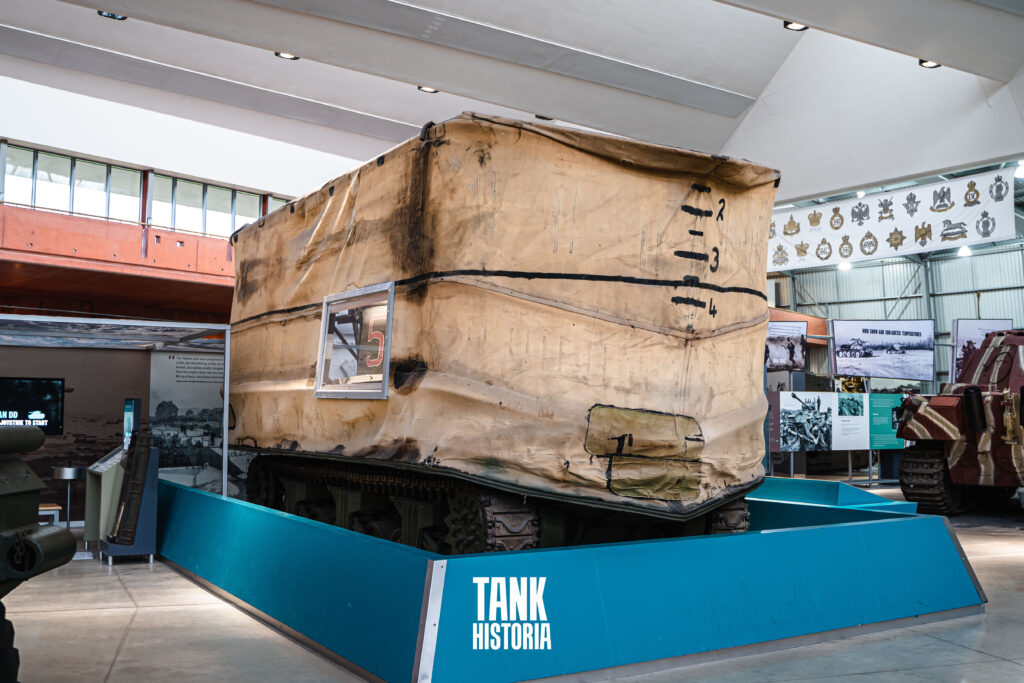
A mild steel platform resembling the outline of a boat was welded onto the tank’s chassis, and the bottom of the screen assembly was carefully sealed to this platform with rubber to ensure it was waterproof.
Propulsion was needed to get the tank to the shore, which came in the form of two propellers driven by the tank’s engine. A particularly clever way was found to power these propellers. As the Sherman’s gearbox was at the front of the tank, it could not transmit power directly to the propellers. Instead, sprockets were fitted to the rear idler wheels, which then provided power to the propellers – this is why DD Shermans appear to have four sprockets.
The driver could use a hydraulic system to swivel the propellers to provide some steering ability, and the tank commander could assist in steering by using a large tiller from the rear of the flotation screen.

With this, the concept of the Duplex-Drive Tank was born. The term “Duplex-Drive” is in reference to the two forms of propulsion available to the tank; propellers in water, and tracks on land.
The first tank to be tested with the concept was a Tetrarch light tank, but following this British Valentine tanks were the initial tanks to be converted in quantity. The Valentines were only partially successful in this role, in part because their guns’ overhang at the front of the tank, requiring them to traverse their turrets to the rear when the screen was inflated.
As a consequence, they were relegated to training. With the excellent Sherman now the standard medium tank of the US and Britain, and becoming available in large numbers, it was decided to use it for conversion to DD tanks. Unlike the Valentine, its 75 mm gun did not hang over the front of the hull, making it ideal for use with a flotation screen.
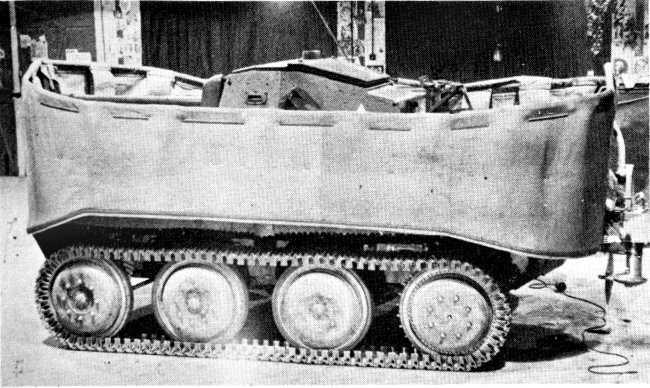
The 75 mm was also considered optimal for amphibious landings. While some armor-piercing rounds were carried, the majority of the tank’s ammunition consisted of high-explosive shells, which were considered the munition of choice when engaging pillboxes and other fighting positions. It was generally theorised that little tank-to-tank combat would occur on the actual landing beaches, and that the Sherman’s 75 mm gun would be adequate for initial infantry support during the invasion.
Read More The Skink Anti-Aircraft Tank with Four 20 mm Autocannons
While some of ‘Hobart’s Funnies’ were constructed using British Churchill tanks, only the Sherman was used in the manufacture of DD tanks.
The Sherman DD Tank
The DD tank was mainly constructed from the Sherman. M4, M4A1, M4A2 and M4A4 variants of the Sherman were used to make DD tanks.
The platform welded onto the chassis of the M4 for attachment of the flotation screen did not increase the width of the vehicle much, but it did add over a meter in height. Importantly though, it did not detract from the mobility of the DD tank when it was operating on the beach after landing. The tank’s turret was not obstructed either when the screen was collapsed, although the headlights and bow machinegun were blocked.

The propellers at the rear were driven by a bevel gear meshing with a pinion, and could be steered by the driver or via direct linkage by the commander, who was provided with a raised platform on the rear of the turret so he could see over the screen.
When not in use, the propellers could be rotated upwards to give the vehicle its standard ground clearance. The vehicle could attain a top road speed of 30 mph (48 km/h) on land, and a top water speed of 4-6 mph (7-10 km/h).
Aside from the DD modifications, the Sherman DD was largely standard, with the same crew of five – commander, gunner, driver, loader and bow gunner – and 75 mm cannon and two .30 calibre machine guns. Crews were provided with breathing apparatus for use in emergencies, each of which had a 5 minute supply of air.
Combat History
The DD tank’s first operational use came on D-Day, and it was a mostly successful introduction to service. This, however, varied dramatically across the Allied forces on D-Day due to different conditions and operational methods employed.
The British and Canadian beaches at Gold, Sword and Juno saw extensive use of the DD tank in the initial assault, and these were accompanied by numbers of Hobart’s specialised combat support vehicles for minefield clearance and fortification demolition.
While some DD tanks were destroyed by German anti-tank guns and other weapons, they contributed enough fire support to the infantry forces that the beaches were successfully captured within the timeframe allowed by the invasion schedule. On Gold, Sword and Juno the tanks gave stellar service, and are often regarded as one of the reasons casualties on these beaches were lower.
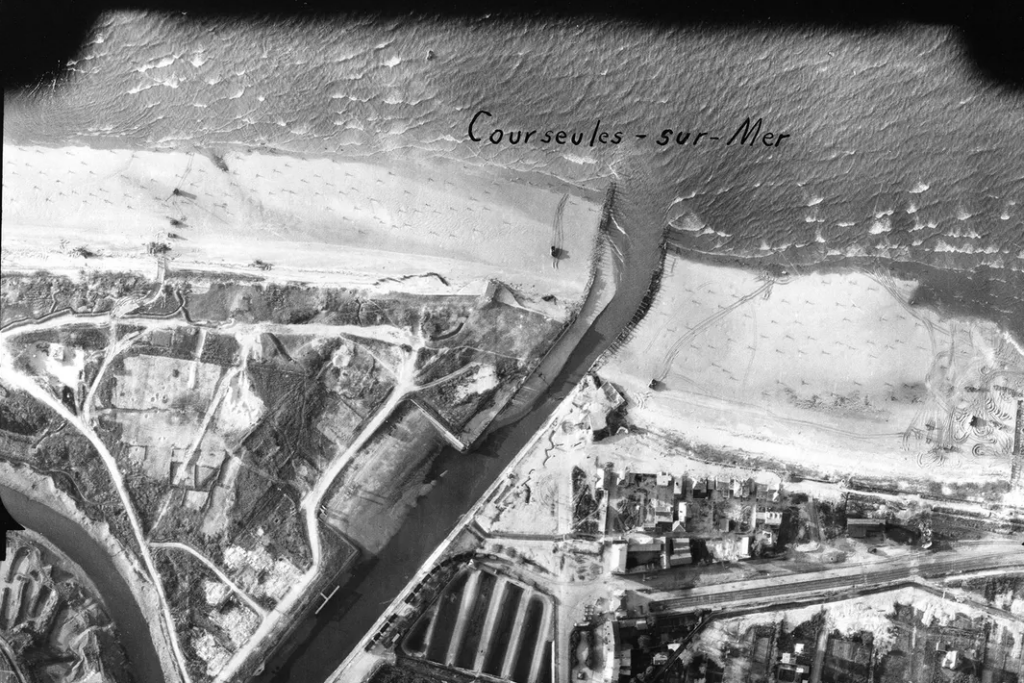
The picture for the American assaults could hardly have been more different, especially during the savage fighting at ‘bloody’ Omaha Beach. With weather conditions in all sectors becoming marginal for the employment of DDs, the British made the late decision to launch the amphibious tanks from closer in to shore, whereas the Americans stuck with the original launching positions farther away from the coast.
Read More Sherman Tank Identification Guide
This was not a major obstacle at Utah beach, with most of the DDs reaching the beach and providing much needed firepower. Despite some considerable confusion the remaining vehicles joined the assault infantry battalions in securing the landing zone, and starting the movement off the beach into the Normandy interior. On Utah beach they were instrumental in clearing bunkers.

The American decision to only utilise DD tanks for their assaults was a costly decision, with lower casualties on the British beaches being partly attributed to the employment of the full spectrum of ‘Hobart’s Funnies’ in British and Canadian assaults.
Combined with the decision to launch the amphibious tanks from further out, and the stubborn and stout defence from a brigade of the veteran German 352nd Infantry Division manning the defences at Omaha, these tactical decisions led to near disaster for the Americans.
The two battalions equipped with DDs launched their tanks from 3 miles (4.8 km) off the shore, which was too far for the worsening weather conditions. Many were swamped quickly, with one battalion losing 27 of the 29 tanks initially launched, although most of the crews survived. Those few that did reach the beach were mercilessly engaged by German anti-tank gunnery, and many of the survivors were knocked out.
The decision was made to land the DDs and other armor directly onto the shore by landing ships and assault transports, but this led to further losses in the DD force when a Landing Craft, Tank (LCT) was successfully engaged with artillery fire and the four DDs onboard were destroyed.

The deadlock on Omaha was only broken late in the day by the heroics of the 1st and 29th Infantry Divisions, and the very few surviving DDs and other armored vehicles helped the infantry secure a small beachhead by nightfall.
However, despite their great successes on the other beaches, the situation on Omaha has tainted their reputation.
The DD tank was used successfully in Operation Dragoon, the Allied landings in the south of France in August 1944, and in Operation Plunder, the British Army’s crossing of the Rhine River in March 1945. DDs were used in Northern Italy on two occasions in April 1945 to cross rivers, and the last combat use of the DD tank was on the 29th April 1945, when it was employed to assault across the Elbe River.
Conclusion
The Duplex-Drive amphibious tank only had a short career during the Second World War as it was mainly designed and manufactured for a specific task: the Allied invasion of occupied Europe. However, work continued past the initial types well into the modern era. Britain even experimented with flotation screens on its 55-ton Centurion.
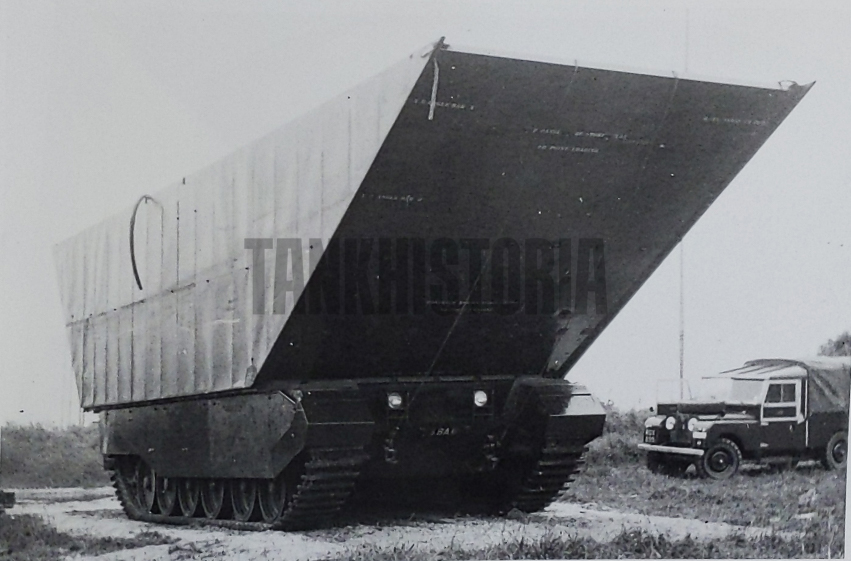
The US also experimented with adding rocket boosters to the Sherman DD to give it a push onto shore when it was struggling for traction.
Short this career may have been for the Sherman, but seldom has a vehicle come along that successfully performed well in combat on its first try. The basic good qualities of the Sherman tank are a major factor in this success, along with the brilliant design of the collapsible flotation screen and the nautical propulsion assembly.
Read More The T14 Assault Tank – A Big, Fat Sherman
Despite heavy losses on Omaha it performed well on D-Day, and many men alive after the first day on the beaches can attribute his continued existence to the DD tank.






